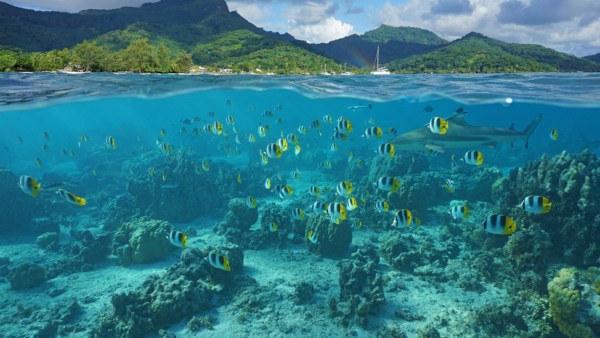Over the years American Sailing has promoted our Plastic Pollution Purge campaign. We have asked our fellow sailors to “bring back more plastic than you take to your boat”, and to have fun practicing your crew overboard drills as you recover trash on the water. But to break the vicious cycle of plastic pollution in the water we must prevent it from getting to the ocean in the first place.
Most of the plastic waste we create in our day-to-day lives comes from the way we eat and drink. Since we usually do this 3 times daily, it’s a great place to start when tackling the reduction of our plastic footprint.
The next time you provision for cruise keep these tips in mind.
Here are some tips for provisioning your next sail sans plastic:
Plan ahead (and don’t hit the store while hungry.)
A good sailor knows that proper provisioning requires a thought-through plan, especially for a cruise. Consider the number of people, their relative sizes/appetites, and your expected agenda: Is this just a day sail with lunch and some snacks, or are you cruising and need to have meals for several days? Proper provisioning helps to prevent wasted food, hungry bellies, and allows you to utilize the space in a sailboat’s small galley more effectively. In turn, it will also help you avoid plastic.
Stick to the border of the grocery store.
As a general rule, most grocery stores have their unpackaged items around their perimeters: fresh produce, breads and baked goods, the butcher counter, et cetera. All the processed stuff goes in the middle aisles. Fresh foods aren’t only healthier, they usually aren’t packaged. Buy foods that can be used in several recipes and won’t spoil. At the deli or butcher counter, kindly ask if they’ll wrap your items in paper instead of plastic. (If you’re worried about fluids leaking from your meat, bring along a reusable container to place the package in.) Same goes for the bakery: ask for a paper bag, or bring your own container to wrap your items.

A simple, “Paper, please!” can prevent unwanted plastic.
Bring your own bags- not just for checkout.
The reusable shopping bag has become mainstream, but what about all those little produce and deli bags? This material is especially lightweight and is almost never recycled. There are cloth, silicon, and even reusable plastic alternatives.
An important note: In cloth bags, produce may wilt and bread will go stale. Transfer to hard containers for longer term storage. Metal containers are best for on the water: lightweight and virtually unbreakable!
Saran, Ziploc, and Solo… Oh my!
Invest in good quality reusables that will last for years, like beeswax-coated cloths as a substitute for saran wrap and a set of metal tumblers instead of the iconically tacky red Solo cup. Don’t have time to hunt down these products? Use what you already have: tin foil, sturdy reusable plastic cups, and reused plastic bags will all do the trick. Just make sure that nothing plastic gets caught up in the wind and escapes to the ocean! Have enough containers and packages to bring your food on board but bring along some extras for leftovers if needed.
Plastic-free shopping, storing and eating.
No styrofoam plates and plastic forks are allowed! Most boats are stocked with a few plates and some cutlery, but if it isn’t your vessel, confirm with the charter company what you can expect to use onboard. It never hurts to bring your own extras- you even may find yourself inviting guests over for dinner!
Enjoying plastic-free provisioning does require some thought and planning, but it goes a long way to help our oceans. Do you have any tips for plastic-free eating onboard? Share your ideas in the comments!













